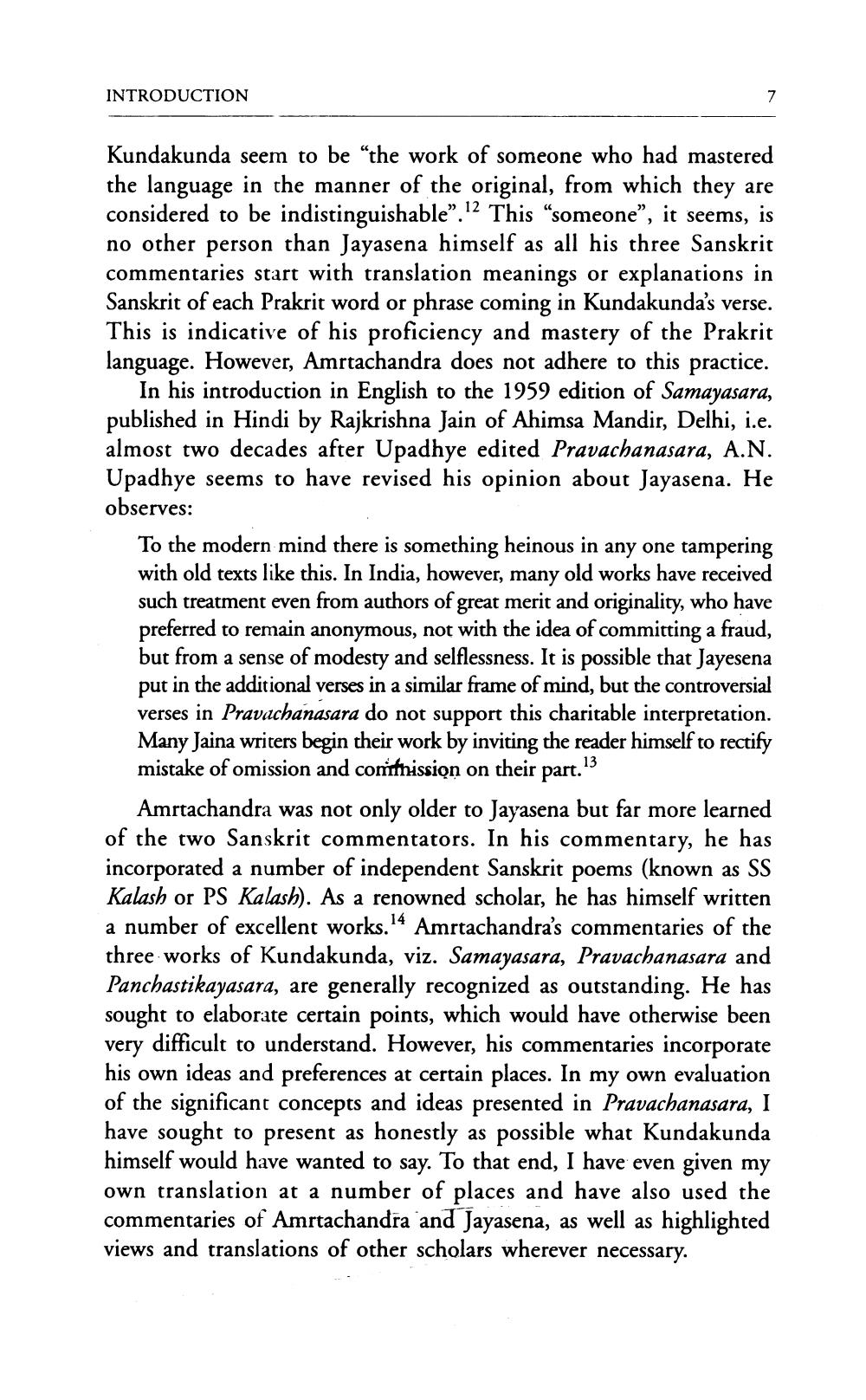________________
INTRODUCTION
Kundakunda seem to be “the work of someone who had mastered the language in the manner of the original, from which they are considered to be indistinguishable”. 12 This “someone”, it seems, is no other person than Jayasena himself as all his three Sanskrit commentaries start with translation meanings or explanations in Sanskrit of each Prakrit word or phrase coming in Kundakunda’s verse. This is indicative of his proficiency and mastery of the Prakrit language. However, Amrtachandra does not adhere to this practice.
In his introduction in English to the 1959 edition of Samayasara, published in Hindi by Rajkrishna Jain of Ahimsa Mandir, Delhi, i.e. almost two decades after Upadhye edited Pravachanasara, A.N. Upadhye seems to have revised his opinion about Jayasena. He observes:
To the modern mind there is something heinous in any one tampering with old texts like this. In India, however, many old works have received such treatment even from authors of great merit and originality, who have preferred to remain anonymous, not with the idea of committing a fraud, but from a sense of modesty and selflessness. It is possible that Jayesena put in the additional verses in a similar frame of mind, but the controversial verses in Pravachanasara do not support this charitable interpretation. Many Jaina writers begin their work by inviting the reader himself to rectify mistake of omission and contnission on their part. 13
Amrtachandra was not only older to Jayasena but far more learned of the two Sanskrit commentators. In his commentary, he has incorporated a number of independent Sanskrit poems (known as SS Kalash or PS Kalash). As a renowned scholar, he has himself written a number of excellent works. 14 Amrtachandra's commentaries of the three works of Kundakunda, viz. Samayasara, Pravachanasara and Panchastikayasara, are generally recognized as outstanding. He has sought to elaborate certain points, which would have otherwise been very difficult to understand. However, his commentaries incorporate his own ideas and preferences at certain places. In my own evaluation of the significant concepts and ideas presented in Pravachanasara, I have sought to present as honestly as possible what Kundakunda himself would have wanted to say. To that end, I have even given my own translation at a number of places and have also used the commentaries of Amrtachandra and Jayasena, as well as highlighted views and translations of other scholars wherever necessary.




